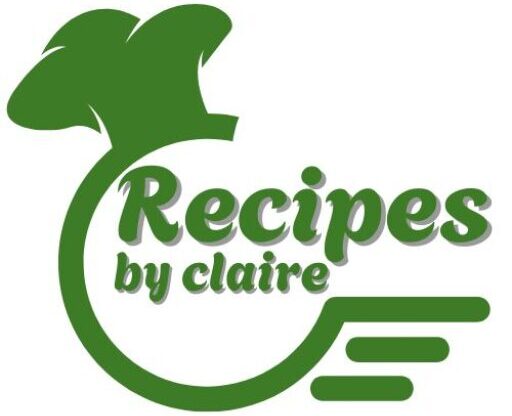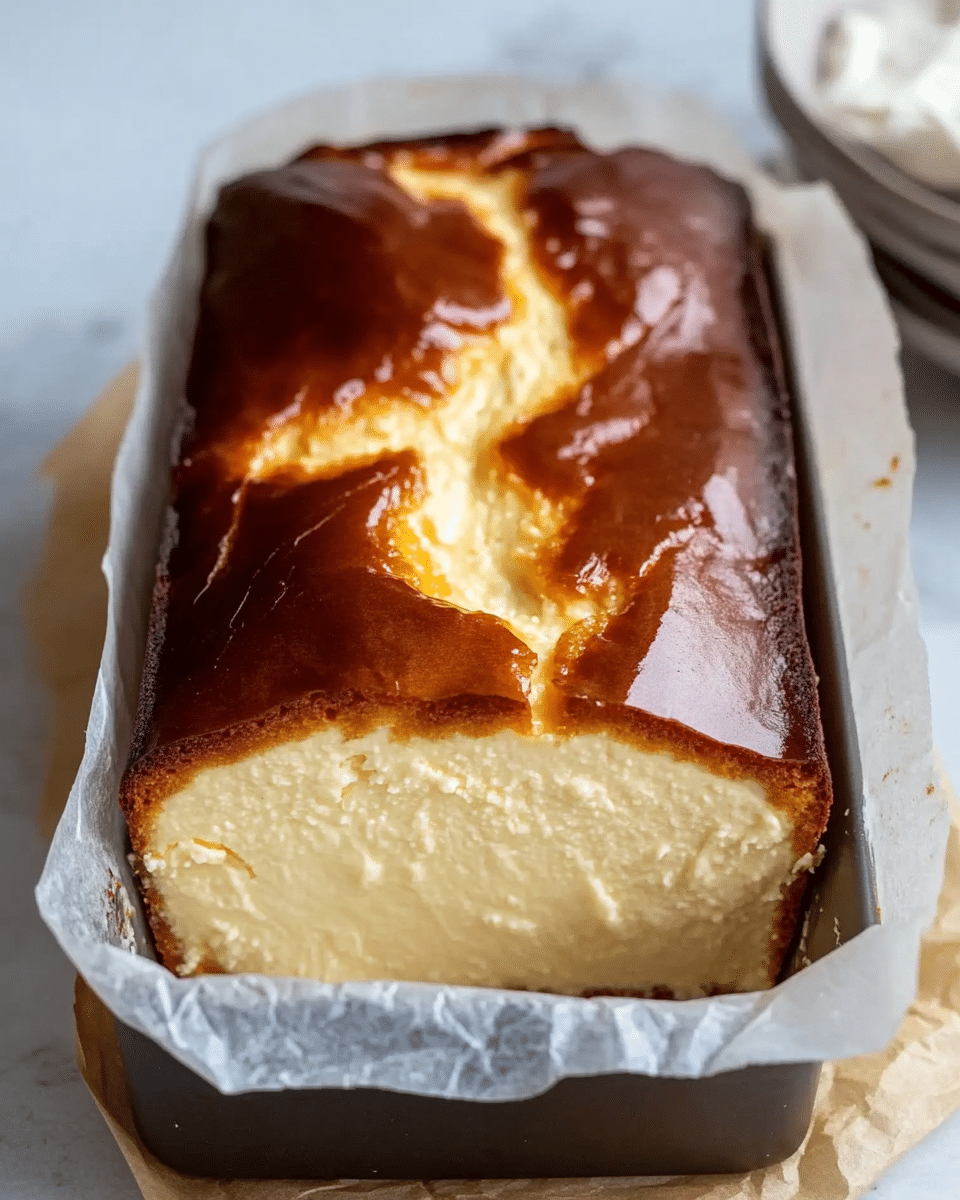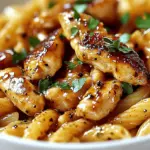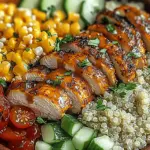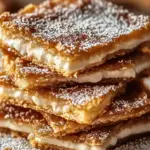The Basque-style cheesecake is known for its bold flavor, creamy texture, and iconic burnt top that gives it a complex caramelized depth. This version brings that charm right into your kitchen with the simplicity of a loaf pan, making it easier than ever to recreate the classic dessert at home. With a silky interior and a dramatically darkened crust, this cheesecake is a study in contrasts smooth meets scorched, sweet meets slightly bitter. Baking it in a loaf pan not only helps with portioning but gives it a charming, rustic presentation that’s ideal for sharing (or not!). It’s an elegant treat that’s surprisingly low-effort yet high-reward.
Full Recipe:
Ingredients:
-
16 oz cream cheese, softened
-
3/4 cup granulated sugar
-
3 large eggs
-
1 1/4 cups heavy cream
-
1/4 cup all-purpose flour
-
1/2 teaspoon salt
-
1 teaspoon vanilla extract
-
Butter or parchment for greasing loaf pan
Directions:
-
Preheat oven to 400°F (205°C). Grease and line a loaf pan with parchment paper, ensuring the paper overhangs on all sides.
-
In a large bowl, beat the softened cream cheese until smooth. Add sugar and continue beating until fluffy.
-
Beat in the eggs, one at a time, ensuring each one is fully incorporated before adding the next.
-
Add the vanilla extract and salt, then pour in the heavy cream slowly while continuing to beat the mixture.
-
Sift in the flour and mix until just combined do not overmix.
-
Pour the batter into the prepared loaf pan. Tap lightly to release air bubbles.
-
Bake for 45-50 minutes or until the top is deeply caramelized and dark brown, and the center jiggles slightly.
-
Let the cheesecake cool in the pan, then refrigerate for at least 4 hours before slicing.
Prep Time: 15 minutes | Cooking Time: 50 minutes | Total Time: 1 hour 5 minutes
Kcal: 340 kcal | Servings: 8 slices
Burnt Basque Cheesecake in a Loaf Pan: A Rustic Classic Reimagined
If you’re a dessert enthusiast or passionate home baker, chances are you’ve come across the famed Burnt Basque Cheesecake. With its signature dark, caramelized top and creamy, custard-like center, this Spanish-born dessert has captured the hearts of sweet tooths worldwide. But what if we told you that you could bring this gourmet-style dessert to life in the humble loaf pan sitting in your kitchen cupboard? That’s right the Burnt Basque Cheesecake in a loaf pan is not only possible, but arguably even more charming, rustic, and accessible.
This article will take you on a journey through the origins, techniques, and nuances of this beloved dessert with a unique twist while providing rich context for your food blog readers. From its Basque Country roots to modern adaptations using a loaf pan, we’ll explore everything you need to know about making and enjoying this show-stopping cheesecake.
Origins of the Burnt Basque Cheesecake
The Burnt Basque Cheesecake, also known as “Tarta de Queso,” hails from the Basque region of Spain, specifically from a restaurant called La Viña in San Sebastián. Unlike the classic New York-style cheesecake that calls for a crust and meticulous water baths to ensure a pristine surface, this rustic version is all about imperfection.
The cheesecake is baked at a higher temperature, which results in a gloriously scorched top and edges. Its rustic charm lies in the fact that it looks slightly burnt hence the name while still remaining incredibly soft and creamy on the inside. This balance of textures and flavors is what makes it so addictive. There’s no crust, no fuss just pure indulgent simplicity.
Why Bake It in a Loaf Pan?
One of the most exciting ways to adapt this recipe is by baking it in a loaf pan instead of the traditional springform pan. This small twist comes with multiple benefits:
-
Accessibility: Most households have at least one loaf pan, making this version perfect for novice bakers or those working with minimal equipment.
-
Portion Control: The loaf pan creates a smaller, narrower cake that’s easier to slice into compact, even pieces ideal for small gatherings or everyday treats.
-
Rustic Aesthetic: Baking in a loaf pan gives the cheesecake a lovely, handcrafted appearance. The parchment paper lining creates natural folds and creases that add to its visual appeal.
-
Even Cooking: Because of its compact size and shape, the cheesecake sets evenly while still achieving the iconic scorched top and creamy center.
Flavor and Texture: A Sensory Experience
One of the main reasons the Burnt Basque Cheesecake has reached cult-favorite status is because of its incredibly unique texture and flavor. Baking it at a high heat caramelizes the outer layer, giving it a bittersweet, almost crème brûlée-like crust. This contrasts perfectly with the soft, luxurious, melt-in-your-mouth center.
The flavor is rich and tangy, with the cream cheese offering a savory edge that balances the sweetness. There’s a hint of vanilla and often a touch of salt to enhance the overall taste. When baked in a loaf pan, these qualities become more concentrated, as the denser shape allows for a thicker, richer interior while still delivering the burnished top that fans adore.
Tips for the Perfect Loaf Pan Basque Cheesecake
Achieving the perfect Burnt Basque Cheesecake in a loaf pan requires some attention to detail, but it’s far from complicated. Here are a few helpful tips for success:
-
Use Room Temperature Ingredients: Cream cheese, eggs, and heavy cream should all be at room temperature to ensure a smooth batter.
-
Don’t Overmix: Overmixing introduces air into the batter, which can affect the texture. Mix just until combined.
-
Line the Pan Generously: Use enough parchment paper so it overhangs the edges of the loaf pan. This makes it easier to lift the cheesecake out and creates the characteristic rustic ridges.
-
Watch for the Jiggle: The center should still jiggle slightly when the cheesecake is done. This ensures that custardy interior we all love.
-
Let It Rest: Allow the cheesecake to cool completely before refrigerating. Chilling for at least 4 hours, or overnight, helps it set and enhances the flavor.
Serving Suggestions and Pairings
Although this cheesecake is incredibly flavorful on its own, there are some delightful ways to elevate the experience:
-
Fresh Fruit: A few fresh berries or sliced stone fruits can add a refreshing contrast to the rich cheesecake.
-
Whipped Cream: A light dollop of homemade whipped cream can enhance the creamy texture.
-
Espresso or Dessert Wine: Pair it with a bold coffee or a sweet dessert wine like sherry or port to complement its complexity.
-
Drizzle of Honey or Caramel: If you’re feeling indulgent, a drizzle of honey or salted caramel adds another layer of decadence.
Versatility in Presentation
One of the perks of baking this cheesecake in a loaf pan is how versatile it is in presentation. You can:
-
Slice it into thin rectangles for elegant plating.
-
Cut thick, rustic slabs for a more homey, comforting feel.
-
Serve bite-sized cubes for dessert trays or tasting menus.
Its golden-brown, charred top and creamy interior make it look stunning no matter how you slice it. Whether you’re entertaining guests or treating yourself on a quiet evening, this cheesecake elevates the moment.
Why It’s Perfect for Your Website Readers
Your audience is likely always searching for easy yet impressive dessert options. The Burnt Basque Cheesecake in a loaf pan hits all the right notes: it’s simple to prepare, visually striking, and incredibly flavorful. The loaf pan format lowers the intimidation factor, making it ideal for beginner bakers, while the refined taste keeps seasoned home cooks intrigued.
Plus, the recipe’s adaptability makes it suitable for a wide range of dietary preferences and occasions. Whether it’s a holiday dessert, a weekend bake, or a dinner party finale, this cheesecake fits the bill.
Conclusion:
The Burnt Basque Cheesecake in a loaf pan is a wonderful example of how small changes can make a big impact in the kitchen. By swapping the traditional springform pan for a loaf pan, you create a more approachable, rustic version of a globally beloved dessert without sacrificing any of its signature qualities.
Its caramelized top, ultra-creamy interior, and ease of preparation make it a go-to recipe for all levels of bakers. With minimal ingredients, no water bath, and no crust to worry about, it’s a beautifully imperfect dessert that celebrates simplicity, flavor, and texture.
